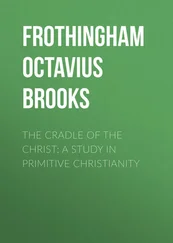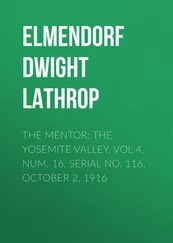Anne Blunt - A Pilgrimage to Nejd, the Cradle of the Arab Race. Vol. 2 [of 2]
Здесь есть возможность читать онлайн «Anne Blunt - A Pilgrimage to Nejd, the Cradle of the Arab Race. Vol. 2 [of 2]» — ознакомительный отрывок электронной книги совершенно бесплатно, а после прочтения отрывка купить полную версию. В некоторых случаях можно слушать аудио, скачать через торрент в формате fb2 и присутствует краткое содержание. ISBN: , Жанр: foreign_antique, foreign_prose, Путешествия и география, на английском языке. Описание произведения, (предисловие) а так же отзывы посетителей доступны на портале библиотеки ЛибКат.
- Название:A Pilgrimage to Nejd, the Cradle of the Arab Race. Vol. 2 [of 2]
- Автор:
- Жанр:
- Год:неизвестен
- ISBN:http://www.gutenberg.org/ebooks/42217
- Рейтинг книги:4 / 5. Голосов: 1
-
Избранное:Добавить в избранное
- Отзывы:
-
Ваша оценка:
- 80
- 1
- 2
- 3
- 4
- 5
A Pilgrimage to Nejd, the Cradle of the Arab Race. Vol. 2 [of 2]: краткое содержание, описание и аннотация
Предлагаем к чтению аннотацию, описание, краткое содержание или предисловие (зависит от того, что написал сам автор книги «A Pilgrimage to Nejd, the Cradle of the Arab Race. Vol. 2 [of 2]»). Если вы не нашли необходимую информацию о книге — напишите в комментариях, мы постараемся отыскать её.
A Pilgrimage to Nejd, the Cradle of the Arab Race. Vol. 2 [of 2] — читать онлайн ознакомительный отрывок
Ниже представлен текст книги, разбитый по страницам. Система сохранения места последней прочитанной страницы, позволяет с удобством читать онлайн бесплатно книгу «A Pilgrimage to Nejd, the Cradle of the Arab Race. Vol. 2 [of 2]», без необходимости каждый раз заново искать на чём Вы остановились. Поставьте закладку, и сможете в любой момент перейти на страницу, на которой закончили чтение.
Интервал:
Закладка:
February 4. – Another day’s waiting, the pilgrims as well as we ourselves impatient, but impatience is no good. Wilfrid, by way of occupying the time, went off on a surveying expedition by himself, with his mare and the greyhounds. He went in a straight line northwards, towards a line of low hills which are visible here from the high ground. They are about twelve miles off. He met nobody except a couple of Bedouins on delúls, going to Atwa, where they told him there is a well. They looked on him and his gun with suspicion, and did not much like being cross-questioned. After that he found the desert absolutely empty of life, a succession of level sandy plains, and rough ridges of sandstone. The hills themselves, which he reached before turning back, were also of yellow sandstone, weathered black in patches, and from the top of the ridge he could make out the Nefûd, like a red sea. He galloped to the ridge and back in three hours. The ride was useful, as it enabled him to get the position of several of the principal hills, Yatubb, Jildiyeh, and others, and to mark them on his chart. He did not say where he intended to go, but as it happened, he returned before there was time for me to become anxious.
In the meanwhile, Awwad and Abdallah had been giving the falcon a lesson with a lure they have made out of one of the nosebags. The bird seems very tame, and comes to Awwad when he calls it, shouting “Ash’o, ash’o,” which he explains is the short for its name, Rasham, a corruption of the word rashmon , which means shining like lightning. We may hope now with Rasham’s assistance to keep ourselves supplied with meat, for hares are in plenty.
In the afternoon visitors came, some Shammar Bedouins of the Ibn Duala family, who have preferred to camp beside us, as more congenial neighbours to them than the Persians. They are on their way from Haïl to their tents in the Nefûd with a message from the Emir that more camels are wanted; and they are going on afterwards with the Haj as far as Meshhed Ali, or perhaps to Samawa on the Euphrates, to buy rice (tummin), and wheat. It is only twice a year that the tribes of Jebel Shammar can communicate with the outside world; on the occasion of the two Haj journeys, coming and going. It is then that they lay in their provision for the year. The eldest of these Ibn Duala, a man of sixty, is very well-mannered and amiable. He dined with Mohammed and the servants in their tent, and came to sit with us afterwards in ours. We are in half a mind to leave this dawdling Haj, and go on with him to-morrow. But his tents lie some way to the left out of our road.
Besides the Ibn Dualas, there are some poor Bedouins with their camels crouched down in our wady to be out of sight. They are afraid of being impressed for the Haj, and at first it was difficult to understand why, if so, they should have come so close to it. But they explained that they hoped to get lost in the crowd, and hoped to have the advantage of its company, without having their camels loaded. They, like everybody else, are on their way to Meshhed to buy corn.
There is a report that the Emir is coming from Haïl to-morrow, and will travel three days with the pilgrimage, going on afterwards, nobody knows where, on a ghazú. This would be tiresome, as now we have wished him good-bye we only want to get away.
February 5. – We have moved at last, but only another ten miles, to a larger wady, which seems to drain the whole country, and which they call Wady Hanasser (the valley of the little fingers), why so called I cannot say. Here there are numerous wells, and a large tract of camel pasture, of the sort called rimh . There are a good number of hares in this cover, and we have had some coursing with our greyhounds, aided by a sort of lurcher who has attached himself to us. The servants call him “Merzug,” which may be translated a “windfall” literally a gift from God, an unattractive animal, but possessed of a nose.
Two hours after starting we came to a curious tell standing quite alone in the plain. It is, like all the rest of the country now, of sandstone, and we were delighted to find it covered with inscriptions, 3 3 Rassam, who has been digging at Babylon, informs me that these inscriptions are in the ancient Phœnician character. It would seem that the Phœnicians, who were a nation of shopkeepers, were in the habit of sending out commercial travellers with samples of goods all over Asia; and wherever they stopped on the road, if there was a convenient bit of soft rock, they scratched their names on it, and drew pictures of animals. The explanation may be the true one, but how does it come that these tradesmen should choose purely desert subjects for their artistic efforts – camels, ostriches, ibexes, and horsemen with lances. I should have fancied rather that these were the work of Arabs, or of whoever represented the Arabs, in days gone by, anyhow of people living in the country. But I am no archæologist.
and pictures of birds and beasts of the sort we had already seen, but much better executed, and on a larger scale. The character, whatever its name, is a very handsome one, as distinct and symmetrical as the Greek or Latin capitals, and some of the drawings have a rude, but real artistic merit. They cannot be the work of mere barbarians, any more than the alphabet. It is remarkable that all the animals represented are essentially Arabian, the gazelle, the camel, the ibex, the ostrich. I noticed also a palm tree conventionally treated, but nothing like a house, or even a tent. The principal subject is a composition of two camels with necks crossed, of no small merit. It is combined with an inscription very regularly cut. That these things are very ancient is proved by the colour of the indentations. The rock is a reddish sandstone weathered black, and it is evident that when fresh, the letters and drawings stood out red against a dark back-ground, but now many of these have been completely weathered over again, a process it must have taken centuries in this dry climate to effect.
We were in front of the Haj when we came to this tell (Tell es Sayliyeh), and we waited on the top of it while the whole procession passed us, an hour or more. It was a curious spectacle. From the height where we were, we could see for thirty or forty miles back over the plain, as far as Jebel Aja, at the foot of which Haïl lies. The procession, three miles long, was composed of some four thousand camels (nor was this the whole Haj), with a great number of men on foot besides. In front were the dervishes, walking very fast, almost running; wild dirty people, but amiable, and quite ready to converse if they know Arabic; then, a group of respectably dressed people walking out of piety, a man with an immense blue turban, we believe to be an Afghan; a slim, very neat-looking youth, who might be a clerk or a shopkeeper’s assistant, reading as he walks a scroll, and others carrying leather bottles in their hands containing water for their ablutions, which they stop every now and then to perform. Sometimes they chant or recite prayers. All these devotees are very rude to us, answering nothing when we salute them, and being thrown into consternation if the greyhounds come near them lest they should be touched by them and defiled. One of them, the youth with the scroll, stopped this morning at our fire to warm his hands as he went by, and we offered him a cup of coffee, but he said he had breakfasted, and turned to talk to the servants, his fellow Mussulmans, but the servants told him to move on. Among Arabs, to refuse a cup of coffee is the grossest offence, and is almost tantamount to a declaration of war. The Arabs do not understand the religious prejudices of the Shiyite Persians.
Some way behind these forerunners comes the berak , or banner, carried in the centre of a group of mounted dromedaries magnificently caparisoned and moving on at a fast walk. These most beautiful creatures have coats like satin, eyes like those of the gazelle, and a certain graceful action which baffles description. Not even the Arabian horse has such a look of breeding as these thorough-bred camels. They are called naamiyeh , because one may go to sleep while riding them without being disturbed by the least jolting.
Читать дальшеИнтервал:
Закладка:
Похожие книги на «A Pilgrimage to Nejd, the Cradle of the Arab Race. Vol. 2 [of 2]»
Представляем Вашему вниманию похожие книги на «A Pilgrimage to Nejd, the Cradle of the Arab Race. Vol. 2 [of 2]» списком для выбора. Мы отобрали схожую по названию и смыслу литературу в надежде предоставить читателям больше вариантов отыскать новые, интересные, ещё непрочитанные произведения.
Обсуждение, отзывы о книге «A Pilgrimage to Nejd, the Cradle of the Arab Race. Vol. 2 [of 2]» и просто собственные мнения читателей. Оставьте ваши комментарии, напишите, что Вы думаете о произведении, его смысле или главных героях. Укажите что конкретно понравилось, а что нет, и почему Вы так считаете.
![Anne Blunt A Pilgrimage to Nejd, the Cradle of the Arab Race. Vol. 2 [of 2] обложка книги](/books/750183/anne-blunt-a-pilgrimage-to-nejd-the-cradle-of-the-cover.webp)











